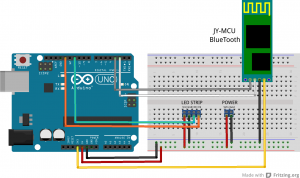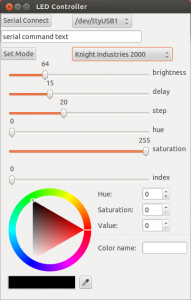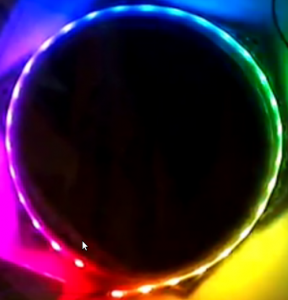[EDIT] Here is a link to an update of these effects made by Stefan Mayer designed to work with the OctoWS2811 LED Library. Thanks a lot Stefan, great work!
[EDIT] I’m planning to clean up the Android control app source and put it on github, but in the meantime here’s the code.
[EDIT] If you end up using this code for a project please send me a link/pics/video! I love seeing what people do with this! If you like I’ll post a link to your project on the FastSPI FX – User Coolness post. Also make sure to thank Daniel Garcia (the genius dev of the FastSPI library) on the G+ FastSPI Community.
Here is an update to the Arduino FastSPI2 FX demo code (v0.51). I’m also introducing an Android Bluetooth Control App and a Chrome Extension.
I’ll continue to work on improving these programs but I think I have them to a point where it might be useful to some people- so here they are!
Here is the Arduino Sketch (v0.51)
Here is the Android App on the Google Play Store (v0.1a)
Here is the Chrome LED Controller Extension (v0.1)
— — — SETUP / NOTES — — —
ARDUINO:
– This version uses the Software Serial library and FastSPI2 library. Also the default serial speed is now 57600.
– The following is a breadboard layout and schematic for setting up a JY-MCU Bluetooth chip with an Arduino (Duemilenove or Nano) to drive a strip of addressable LEDs. This should work with any LED strip that is supported by FastSPI2 RC4 and later.


ANDROID APP:
– To control LED strips via the Android app you’ll have to pair the JY-MCU module with your smartphone/tablet in the Bluetooth/Wireless settings. The PIN for these modules is usually 1234.
CHROME EXTENSION:
– To load the extension, unrar the file to a directory. Then in Chrome go to Settings>Extensions>Load Unpacked Extension. Then select the directory. Then you can launch it from there.
– This extension has been tested on Ubuntu 12.04 and WindowsXP. For Windows you’ll have to install the USB Serial drivers, but the automatic driver search seems to work fine for this.
— — —
If you find this really useful, please consider donating a little to the cause. Thanks!
[paypal-donation reference=”FastSPI2 LED FX – Android/Chrome”]
I’m also grateful for bitcoin donations to: 1K5Yy77ejes2FZrHBG5fns3QAicnwZcduq


